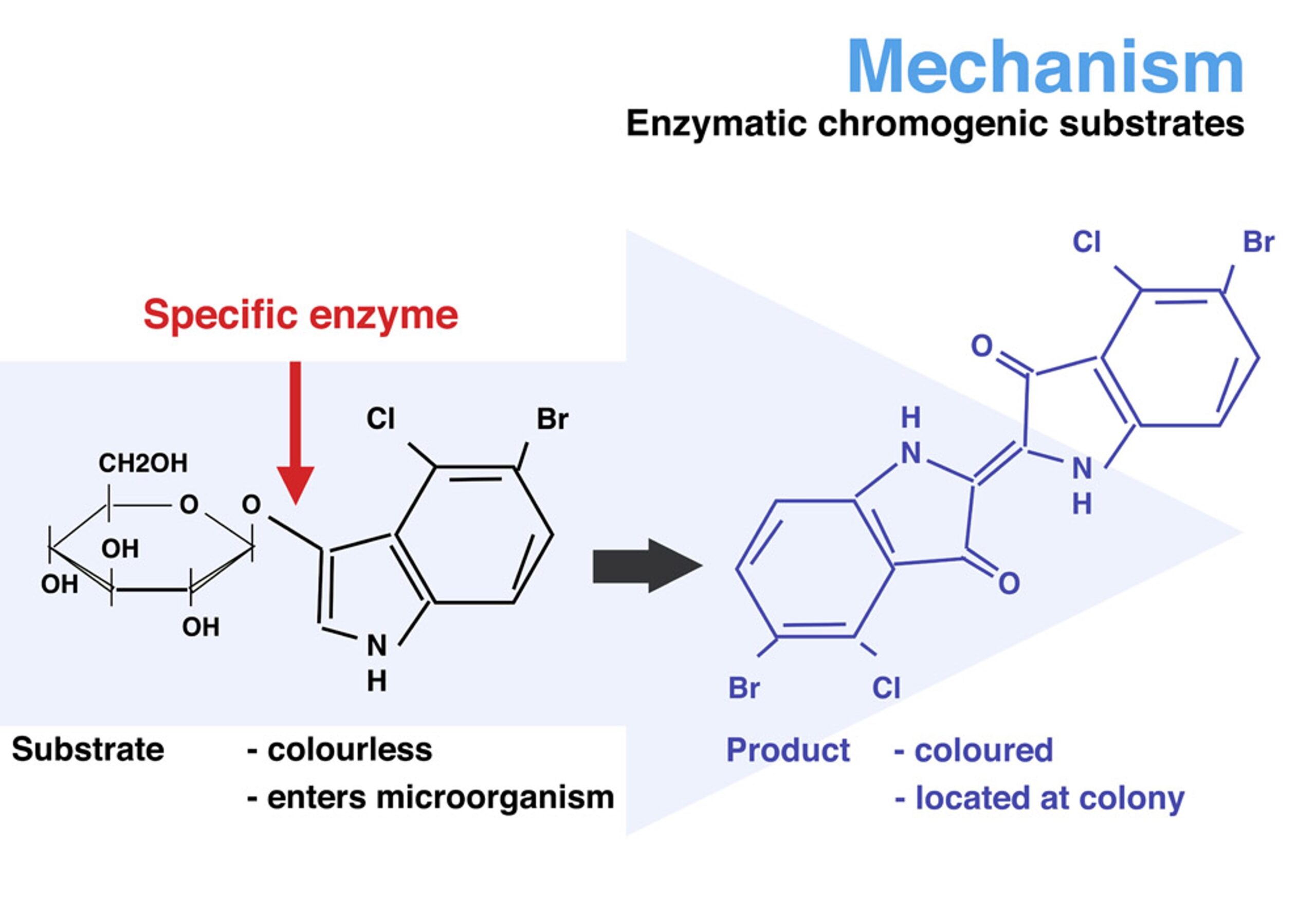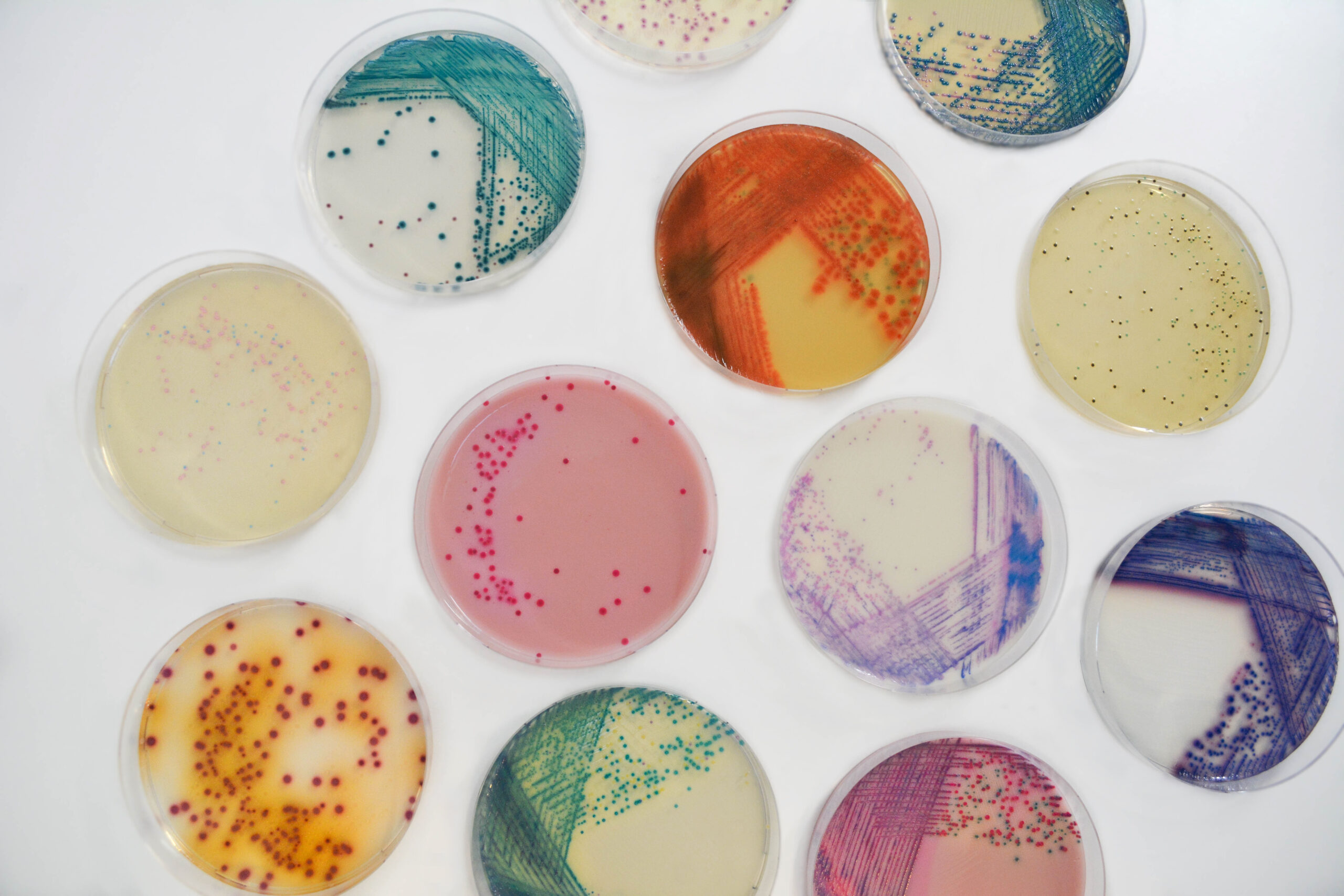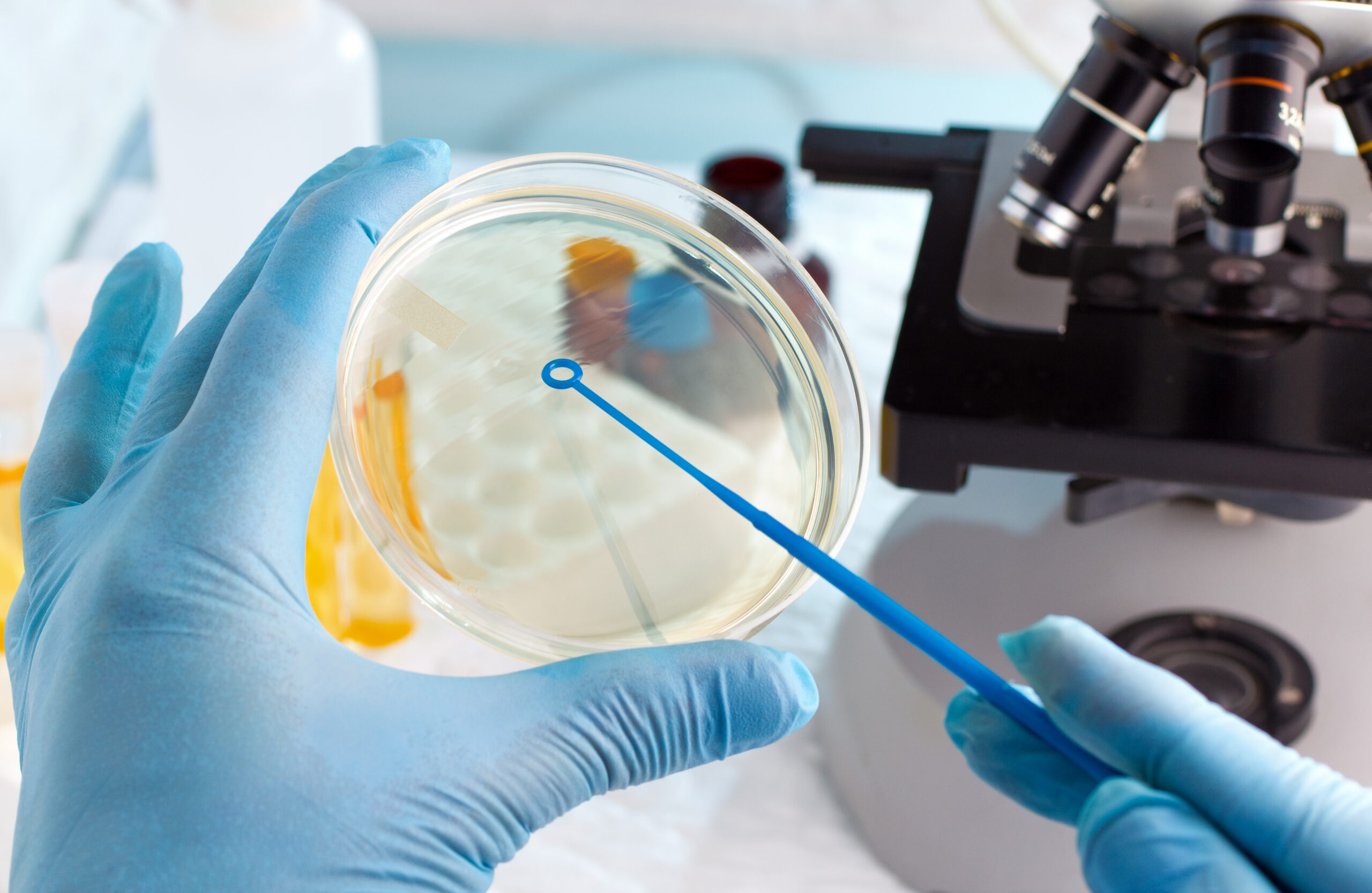The first chromogenic culture medium (for detection of E. coli) was invented and patented by Dr Alain Rambach in 1979. The introduction of this medium triggered a revolution in microbial diagnosis driven by the introduction of a whole range of media for the detection of key clinical & food borne pathogens.
How does Chromogenic Culture Media technology work?
The power of chromogenic technology is the combination of the detection of precise enzyme activity and localized staining precipitating in the colony, allowing an easy differentiation of microorganisms thanks to the coloration of grown bacteria.
This technology is based on soluble colorless molecule called chromogen, composed of a substrate, targeting a specific enzymatic activity and a chromophore.
When the target organism’s enzyme cleaves the colorless chromogenic conjugate, the chromophore is released. In its unconjugated form, the chromophore exhibits its distinctive color and, due to reduced solubility, forms a precipitate.
The result is a very specific & distinctive color-based differentiation, which is clearly distinguishable to the naked eye under normal lighting conditions.


What are the advantages of this method ?
Chromogenic technology is a powerful tool for detecting targeted microorganisms even in mixed culture conditions, allowing the user to:
- Phenotypic detection, i.e. on the basis of the pattern actually expressed by the microorganism,
- Facilitate the final identification (no subculture, fewer colonies to test),
- A faster and more efficient result.
For the laboratory technician: Easy to read at a glance!
- The result is very specific and distinctive in mixed culture,
- Color-based differentiation method,
- Naked eyes reading of the plates thanks to the unique colors. With this technique, colonies of specific microorganisms can be recognized by their color at a glance, limiting the risk of misinterpretations.
Economies of scale: Cost savings & fast method!
- It allows for easy differentiation of microorganisms without the complex and costly traditional detection procedures employed in traditional agar testing techniques (No subcultures),
- By saving time and labor, it increases the efficiency of laboratory testing,
- By shortening the timeframe for identifying pathogens, it helps to prevent the spread of infections.

Why using CHROMagar™ products ?
International distribution network
CHROMagar™ supplies the widest range of dehydrated chromogenic culture media designed to target specific need in clinical, water-related, industrial and veterinarian fields!
Our entire range of products is available worldwide through 138 distributors located on every continent. To locate your local distributor, please visit our Distributor section.
The widest range of dehydrated culture media
CHROMagar™ products are sold in dehydrated form in the following sizes: Qsf 5 L and Qsf 25 L. QSF stands for "Quantity of powder sufficient for X liters of media". A QSF 5 L pack can prepare approximately 250 plates of media. Bulk sizes are also available upon request.
From our powder, CHROMagar™ chromogenic plates are easy to prepare.
Just add purified water to the powder, bring to boil, let it cool down and pour! Use the entire pack or, if there is a need for a smaller number of plates just a portion.
If kept under appropriate storage temperatures, CHROMagar™ powder products have a long shelf life (above 18 months). This flexibility is essential to avoid the costly waste resulting from unused plates.
Prepared media plates made with CHROMagar™ powder are available in several countries under Colorex™ and RambaCHROM™ trademarks.


